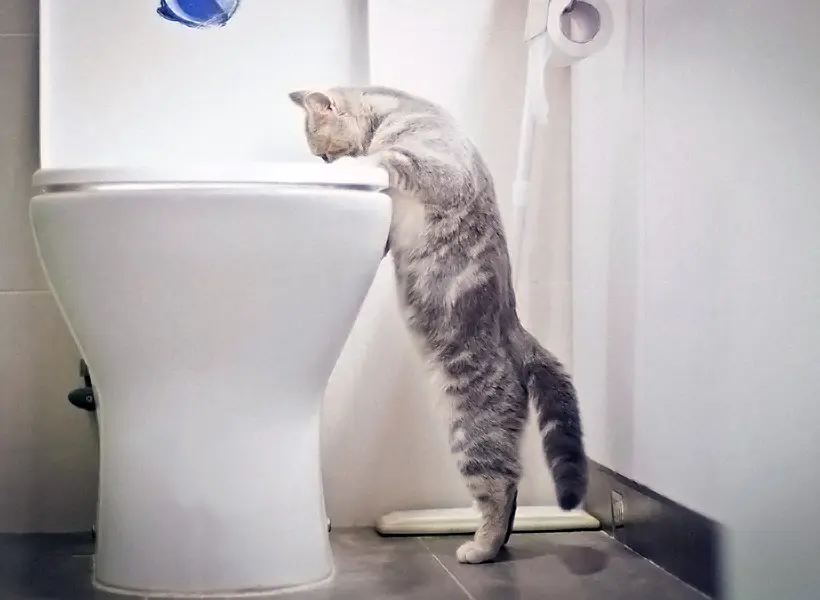The Consequences of Flushing Cat Poop Down Your Toilet - Safeguard Your Pipes
The Consequences of Flushing Cat Poop Down Your Toilet - Safeguard Your Pipes
Blog Article
Just about every person may have their personal conception about Don’t flush cat feces down the toilet.

Introduction
As feline proprietors, it's necessary to be mindful of just how we dispose of our feline pals' waste. While it may appear hassle-free to flush cat poop down the bathroom, this practice can have damaging consequences for both the setting and human health.
Alternatives to Flushing
Fortunately, there are safer and extra accountable methods to deal with feline poop. Take into consideration the following choices:
1. Scoop and Dispose in Trash
One of the most typical approach of disposing of pet cat poop is to scoop it into an eco-friendly bag and toss it in the garbage. Make sure to utilize a committed trash inside story and deal with the waste promptly.
2. Usage Biodegradable Litter
Go with biodegradable cat trash made from products such as corn or wheat. These clutters are eco-friendly and can be safely disposed of in the trash.
3. Hide in the Yard
If you have a yard, take into consideration burying cat waste in a marked location far from veggie gardens and water sources. Make certain to dig deep enough to prevent contamination of groundwater.
4. Set Up a Pet Waste Disposal System
Invest in a pet garbage disposal system particularly designed for feline waste. These systems use enzymes to break down the waste, decreasing odor and ecological impact.
Health and wellness Risks
In addition to ecological worries, flushing cat waste can likewise pose wellness dangers to humans. Pet cat feces may include Toxoplasma gondii, a parasite that can create toxoplasmosis-- a possibly extreme health problem, especially for pregnant women and individuals with weakened body immune systems.
Ecological Impact
Purging feline poop introduces harmful microorganisms and bloodsuckers into the water supply, posturing a substantial risk to water ecological communities. These pollutants can adversely influence aquatic life and concession water top quality.
Conclusion
Liable animal possession prolongs beyond giving food and sanctuary-- it also entails appropriate waste administration. By refraining from purging pet cat poop down the bathroom and choosing alternate disposal methods, we can reduce our environmental footprint and safeguard human health and wellness.
Why Can’t I Flush Cat Poop?
It Spreads a Parasite
Cats are frequently infected with a parasite called toxoplasma gondii. The parasite causes an infection called toxoplasmosis. It is usually harmless to cats. The parasite only uses cat poop as a host for its eggs. Otherwise, the cat’s immune system usually keeps the infection at low enough levels to maintain its own health. But it does not stop the develop of eggs. These eggs are tiny and surprisingly tough. They may survive for a year before they begin to grow. But that’s the problem.
Our wastewater system is not designed to deal with toxoplasmosis eggs. Instead, most eggs will flush from your toilet into sewers and wastewater management plants. After the sewage is treated for many other harmful things in it, it is typically released into local rivers, lakes, or oceans. Here, the toxoplasmosis eggs can find new hosts, including starfish, crabs, otters, and many other wildlife. For many, this is a significant risk to their health. Toxoplasmosis can also end up infecting water sources that are important for agriculture, which means our deer, pigs, and sheep can get infected too.
Is There Risk to Humans?
There can be a risk to human life from flushing cat poop down the toilet. If you do so, the parasites from your cat’s poop can end up in shellfish, game animals, or livestock. If this meat is then served raw or undercooked, the people who eat it can get sick.
In fact, according to the CDC, 40 million people in the United States are infected with toxoplasma gondii. They get it from exposure to infected seafood, or from some kind of cat poop contamination, like drinking from a stream that is contaminated or touching anything that has come into contact with cat poop. That includes just cleaning a cat litter box.
Most people who get infected with these parasites will not develop any symptoms. However, for pregnant women or for those with compromised immune systems, the parasite can cause severe health problems.
How to Handle Cat Poop
The best way to handle cat poop is actually to clean the box more often. The eggs that the parasite sheds will not become active until one to five days after the cat poops. That means that if you clean daily, you’re much less likely to come into direct contact with infectious eggs.
That said, always dispose of cat poop in the garbage and not down the toilet. Wash your hands before and after you clean the litter box, and bring the bag of poop right outside to your garbage bins.
https://trenchlesssolutionsusa.com/why-cant-i-flush-cat-poop/

Hopefully you liked our topic about Don’t flush cat feces down the toilet. Thanks a lot for taking the time to browse our piece of content. Do you know anybody else who is excited about the subject? Be sure promote it. Thank you so much for taking the time to read it.
Visit Website Report this page